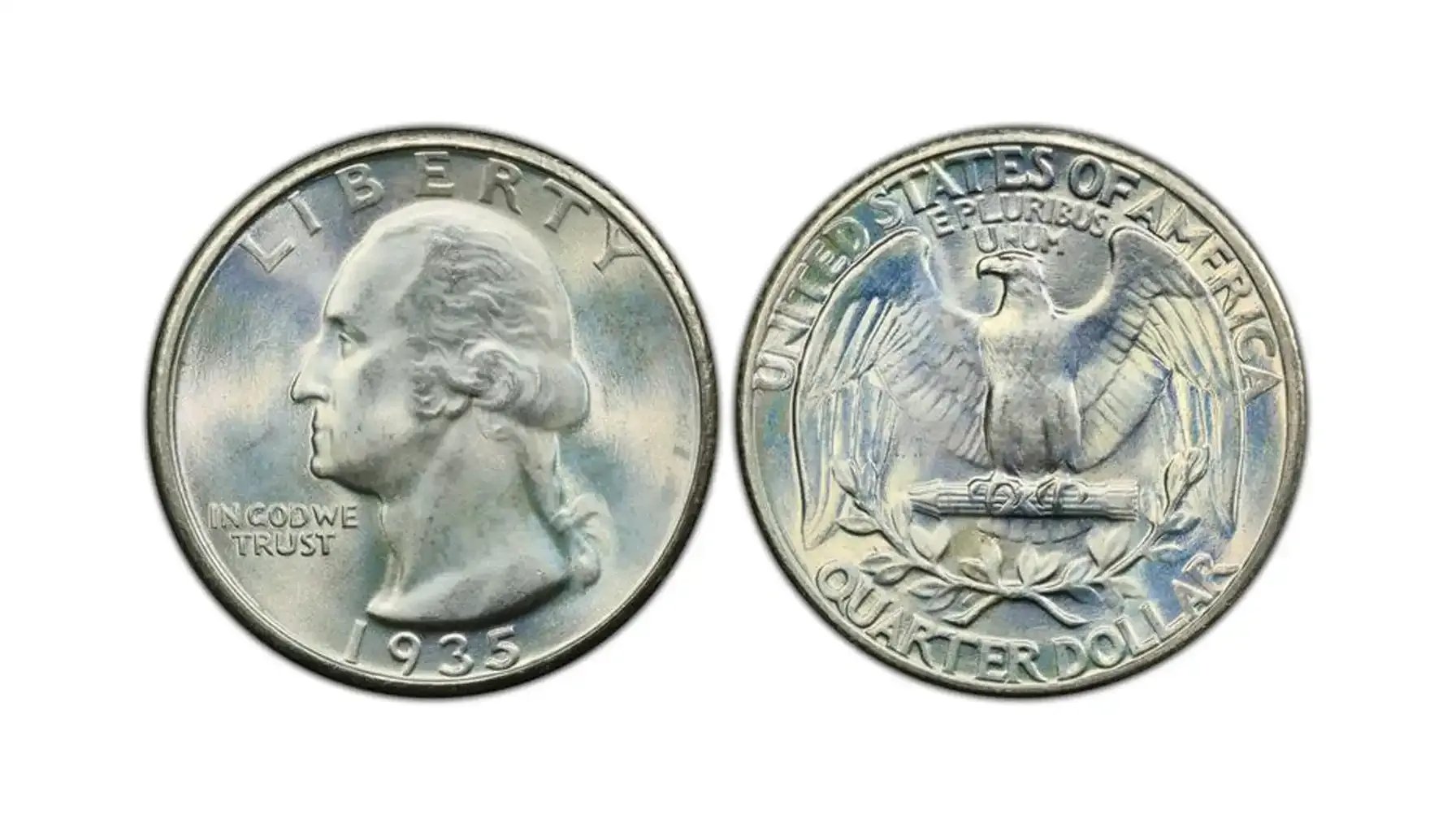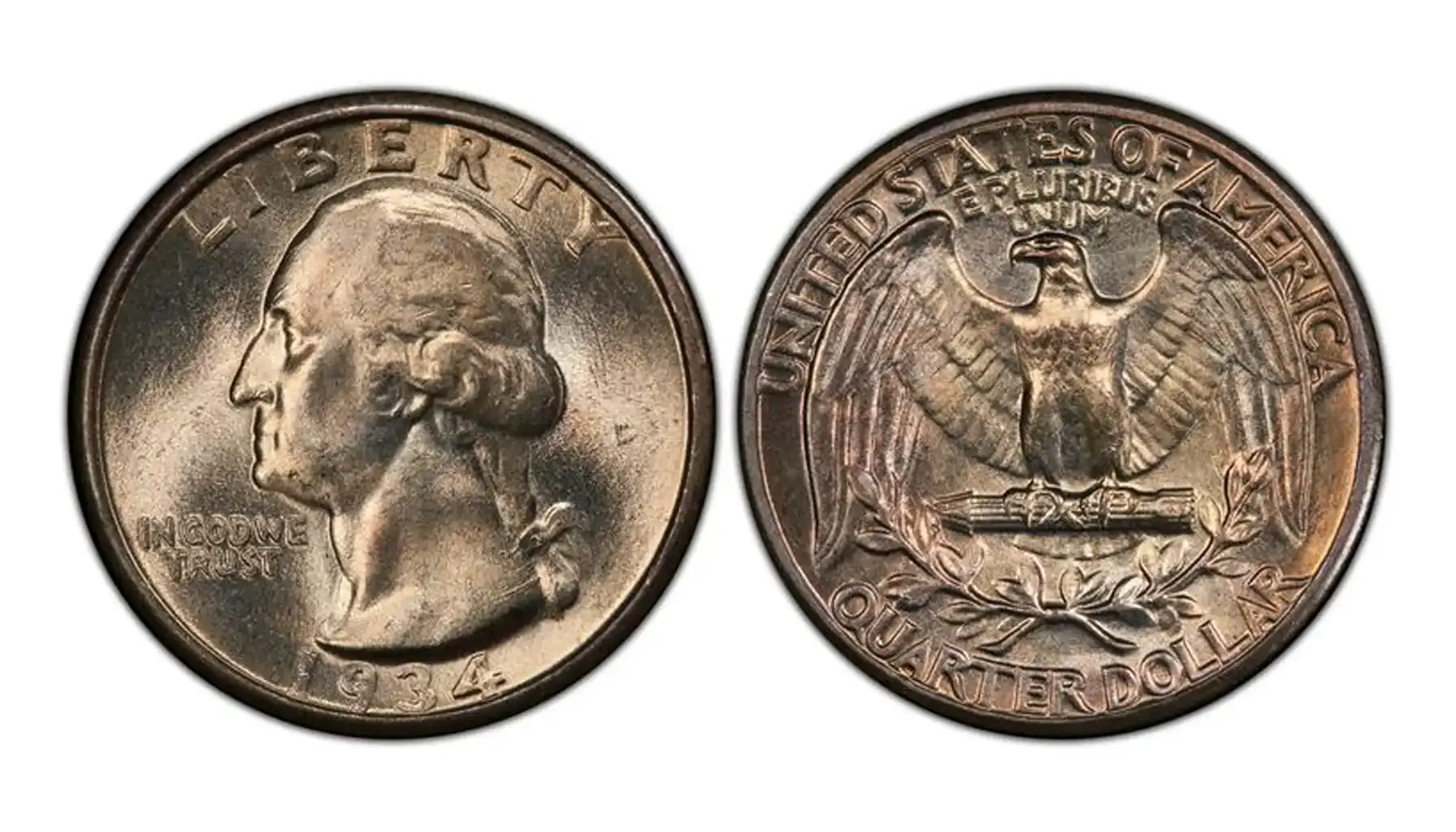Contents:
- Overview of the 1917 Dime Series
- How Much Is a 1917 Dime Worth Today?
- Mint Mark Impact: P, D, and S Breakdown
- Spotlight on the 1917 Mercury Dime
- 1917 Liberty Head Dime: Final Barber Issue
- Full Band Dimes: Why They Matter
- Errors to Watch For on the 1917 Dime
- Is a 1917 Silver Dime Worth Collecting?
- Final Thoughts and Market Tips
The 1917 Mercury dime marked only the second year of Adolph A. Weinman’s iconic Winged Liberty Head design. The U.S. Min t struck these dimes at Philadelphia and Denver, creating variations that draw collector interest. Its timeless motif and solid silver composition cemented its place in numismatic history.
Collectors value 1917 dimes for their Full Band (FB) varieties and early mintages. These coins offer a mix of historical significance and scarcity, especially in higher grades. This guide will help you spot key features and identify coins.
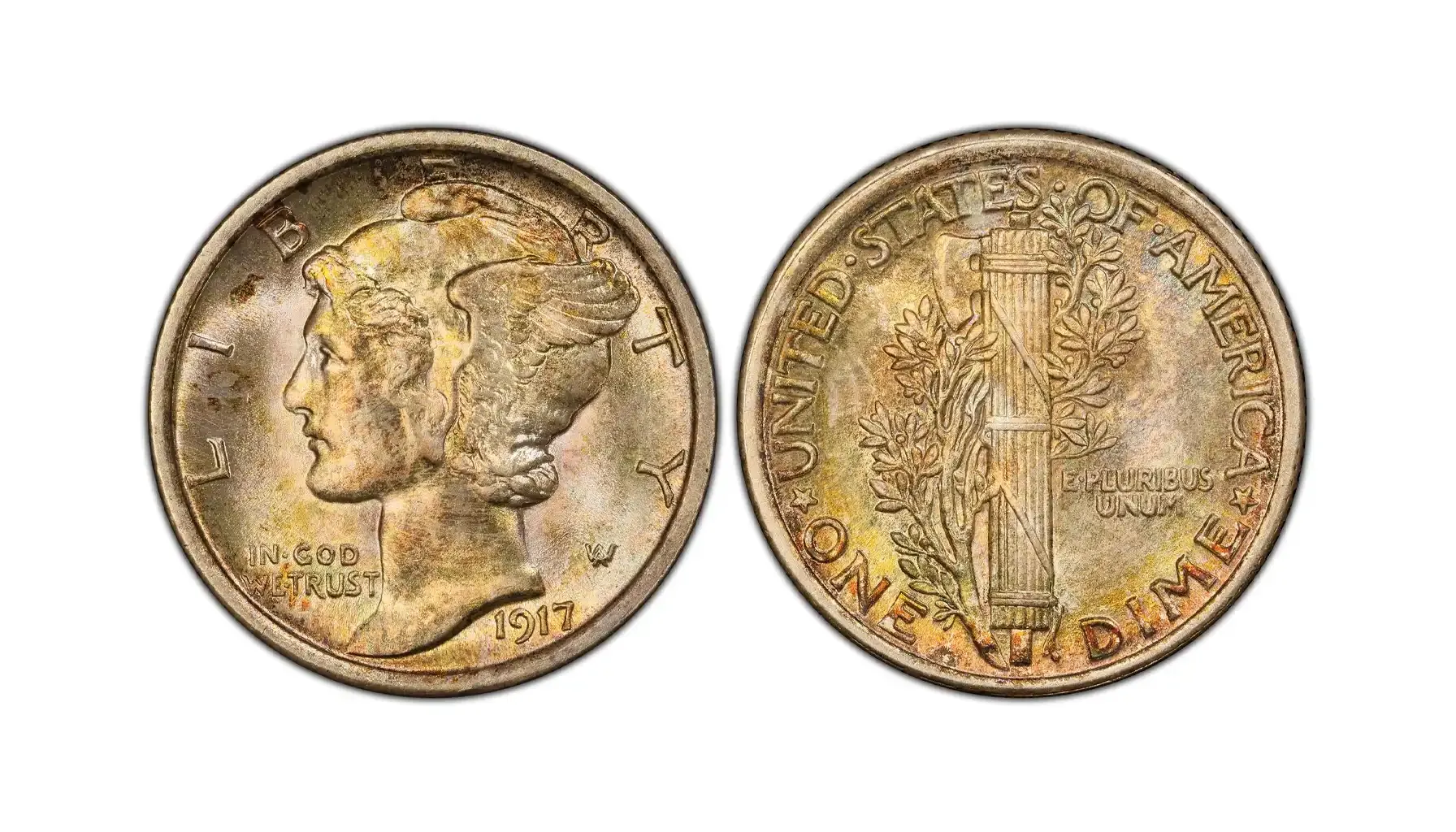
Overview of the 1917 Dime Series
The U.S. Mint introduced the 1917 dime as the first Mercury design in a line that replaced the Barber series. The Barber showed Liberty with a wreath, while the Mercury featured a winged cap symbolizing freedom of thought. Collectors study the 1917 liberty dime value to compare early strikes with later issues.
Philadelphia and Denver struck both Barber and Mercury dimes in 1917. Many dealers track the value of 1917 dime by condition and mint mark. High-grade Full Band examples attract strong premiums. Most circulated pieces trade near silver melt value, but collector interest pushes rarer coins higher.
Collectors praise the Mercury design for its artistry and symbolism. They often ask about 1917 US dime worth when evaluating an old collection. This series marked a cultural shift in U.S. coinage and remains popular with modern numismatists.
3 key differences between Barber and Mercury dime designs
Obverse Portrait: Barber shows Liberty with a small wreath, while Mercury coin presents Liberty wearing a winged Phrygian cap.
Reverse Motif: Barber reverse features a wreath of various leaves; Mercury reverse shows fasces tied with an olive branch, symbolizing unity and peace.
Lettering Style: Barber ten-cent coins use classic serif fonts around the edge; Mercury dimes adopt a more modern, streamlined text with “LIBERTY” and “IN GOD WE TRUST.”
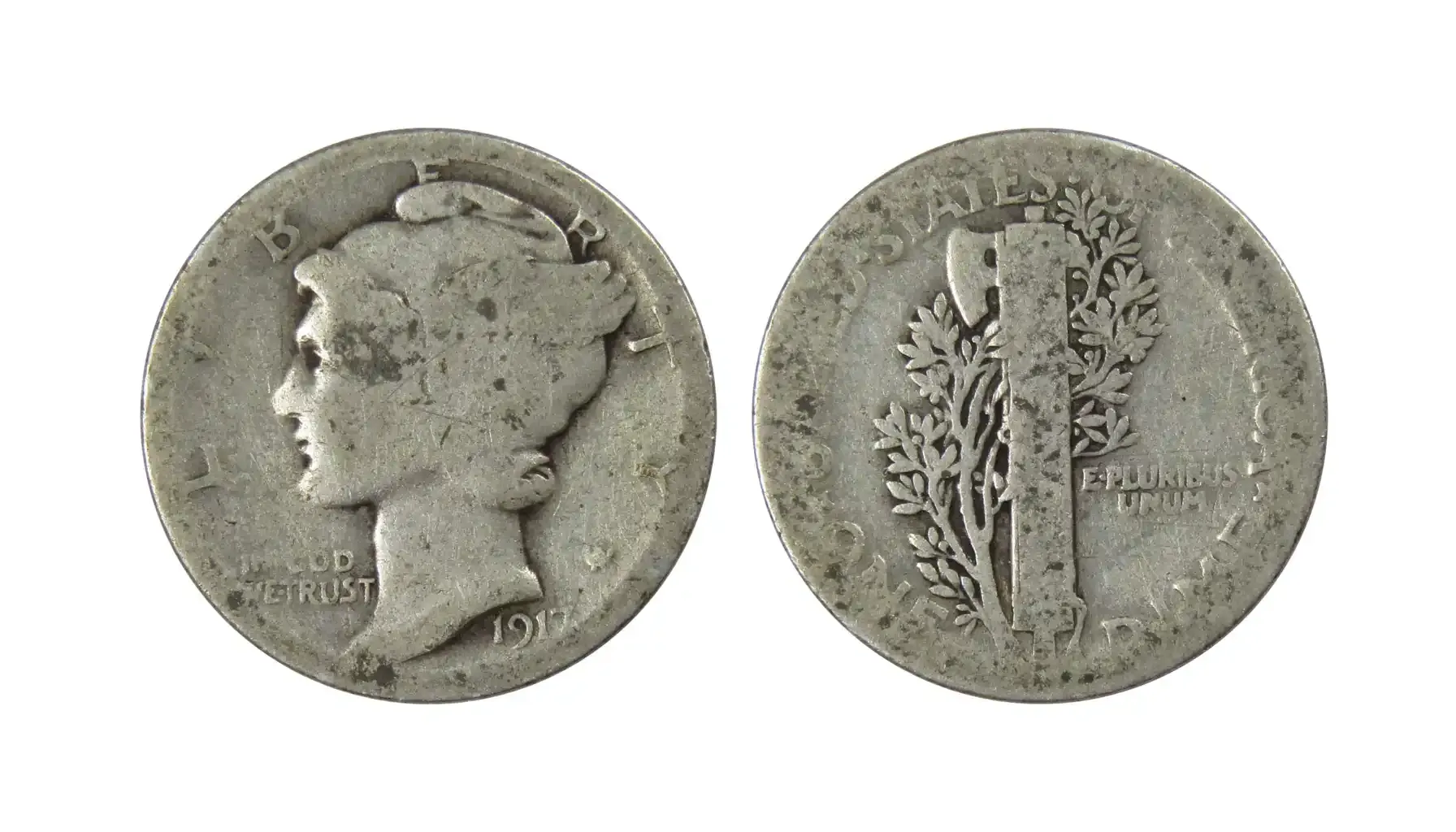
How Much Is a 1917 Dime Worth Today?
Most dealers track how much is a 1917 dime worth by comparing worn pieces to Mint State survivors. In low grades, such as Good (G) or Very Good (VG), these dimes trade near $2–$3. That gives collectors a baseline for common, heavily circulated examples.
As grades improve, the 1917 dime value today rises steadily. Fine (F) coins often sell for around $5, while Extremely Fine (EF) examples can reach $10. Uncirculated Mint State (MS) coins command significantly higher prices, with superb examples fetching hundreds of dollars.
Collectors looking for top-end specimens focus on full bands and original luster. The 1917 dime coin value at MS63 may approach $100, and an MS65 Full Band could climb to $200 or more. Ultra-rare MS67 examples trade near $1,000 when certified by major services.
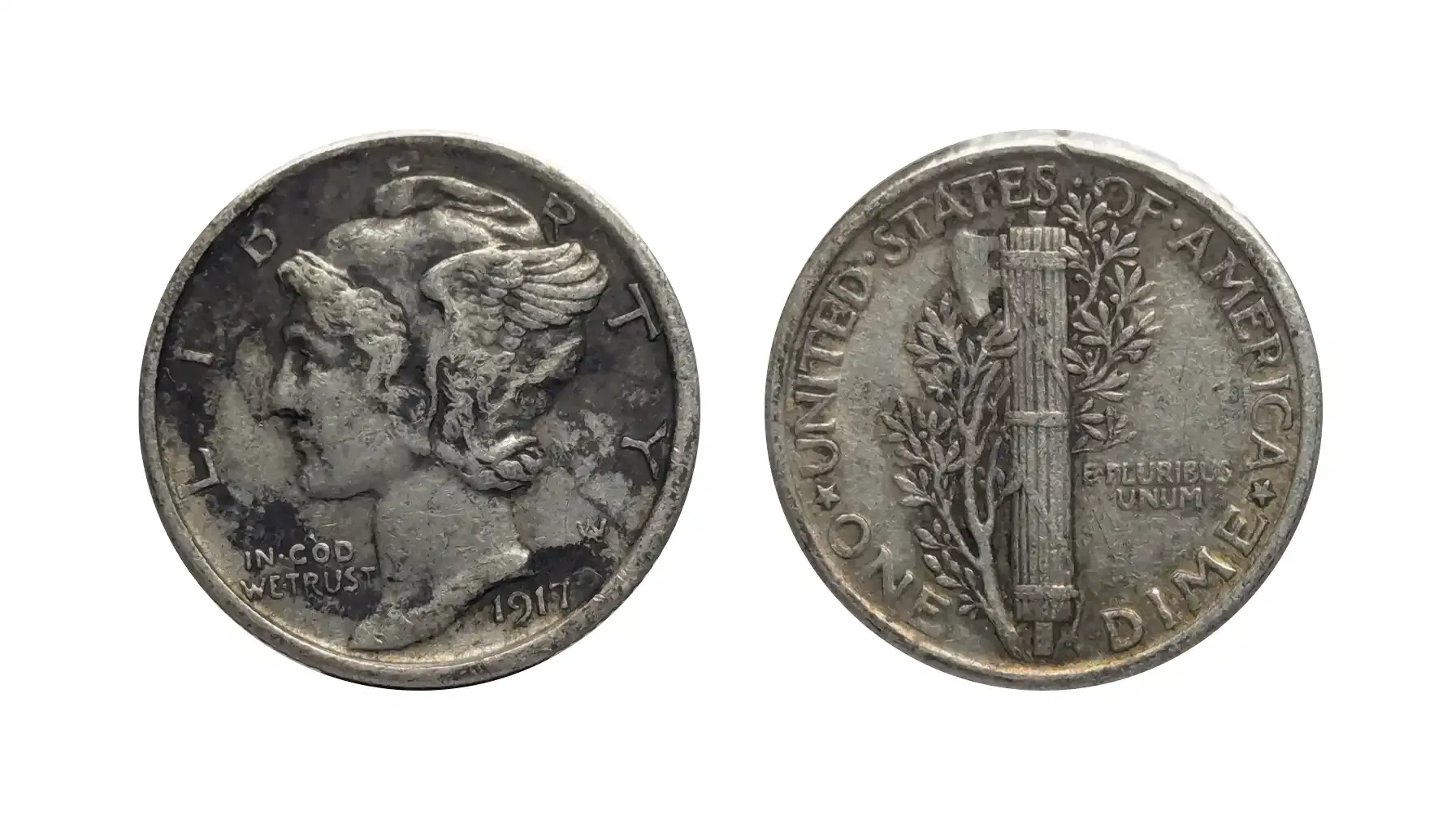
Grade | Retail Value (USD) |
G | $2 |
VG | $3 |
F | $5 |
VF | $7 |
EF | $10 |
AU | $20 |
MS60 | $50 |
MS63 | $100 |
MS65 | $200 |
MS67 | $1,000 |
Mint Mark Impact: P, D, and S Breakdown
Most collectors find a 1917 dime no mint mark value when they inspect coins lacking letters above the date. Philadelphia struck these no-mark dimes in large numbers. Circulated examples in this group often trade near base levels around $2–$3. Uncirculated Philadelphia strikes can still fetch $50–$100 based on condition.
Denver added a “D” mint mark on coins above the date. That detail helps determine the 1917 D dime value. Denver strikes had lower mintages than Philadelphia, giving them modest premiums. In average circulated grades, Denver dimes trade around $3–$5. High-grade examples can rise to $75 or more, showing why collectors track 1917 dime worth with mint mark.
San Francisco placed an “S” above the date on its dimes. That tiny “S” makes the 1917 S dime value stand out. San Francisco strikes carry higher premiums, especially in uncirculated grades. Uncirculated S dimes in MS63 can approach $150. MS65 Full Band examples often exceed $300.
For a detailed guide to mint mark placement, see the 1916-D Mercury Dime Value Collector’s Guide.
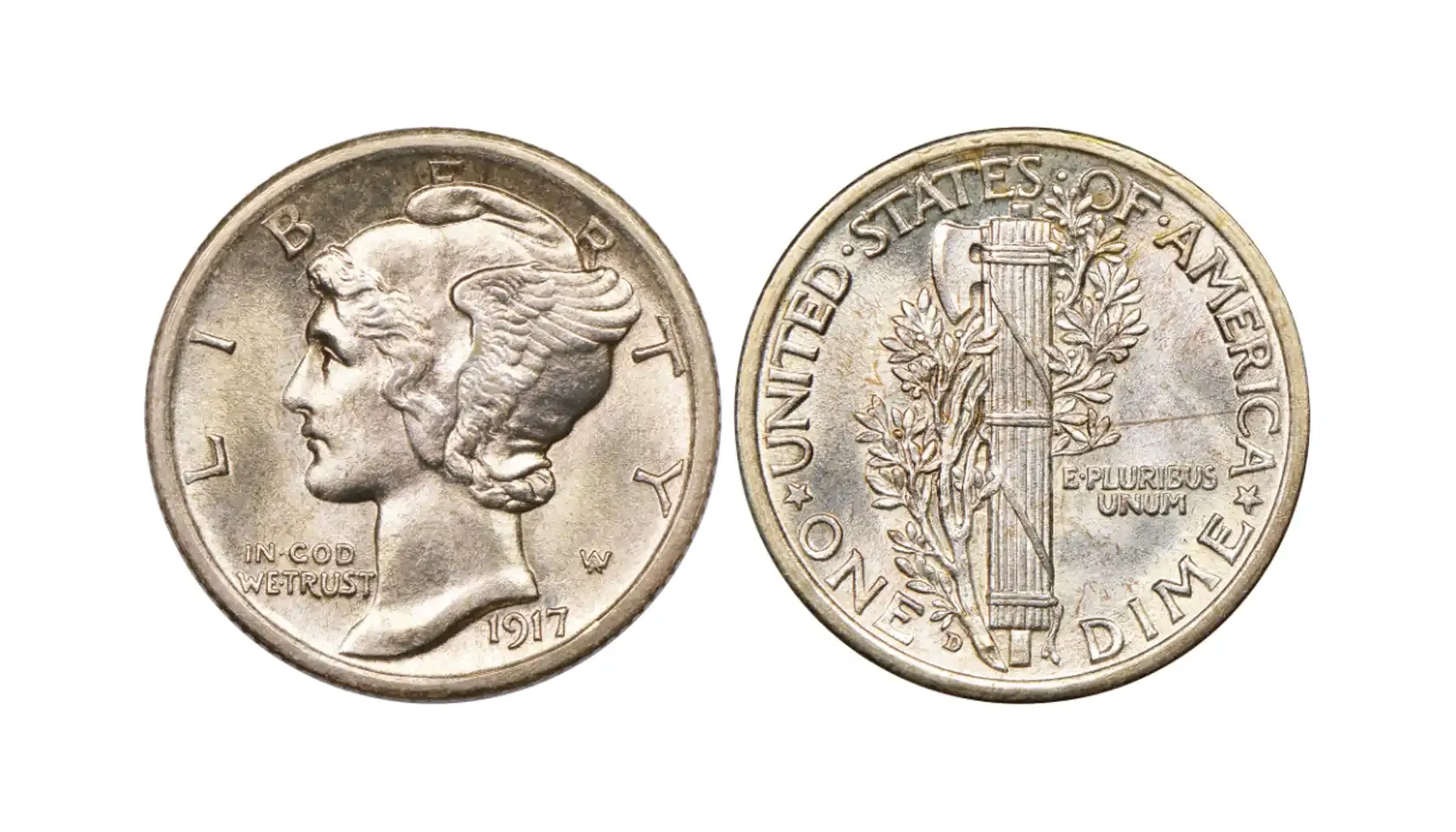
Mint mark rarity rankings (P, D, S)
P (No Mint Mark): Highest mintage, lowest premium in common grades
D (Denver): Moderate mintage, modest premium in uncirculated conditions
S (San Francisco): Lowest mintage, highest premiums especially in higher grades
Spotlight on the 1917 Mercury Dime
The Winged Liberty Head design highlights Liberty wearing a winged cap, symbolizing freedom of thought. The coin’s obverse shows “LIBERTY” around the edge and “IN GOD WE TRUST” near the rim. Collectors pay close attention to the original die work when estimating 1917 mercury dime value.
Each Mercury dime carries distinct Full Bands on the fasces bundle, indicating strong strike quality. Experts check the sharpness of the bands to gauge condition. High-grade examples with clear bands often bring added premiums, influencing 1917 mercury dime worth with mint mark in both Philadelphia and Denver issues.
On the reverse, the fasces represents unity and strength. An olive branch wraps around the fasces to symbolize peace. The rim lists “UNITED STATES OF AMERICA” and “ONE DIME.” Collectors compare recent sales to determine mercury dime 1917 value today for top-quality pieces.
Design symbols on the Mercury ten-cent coin
Winged Cap: Symbolizes freedom of thought and progress
Fasces: Represents unity and strength, a bundle of rods bound together
Olive Branch: Encircles the fasces to symbolize peace
LIBERTY Inscription: Emphasizes the nation’s core value of liberty
IN GOD WE TRUST: Articulates a national motto and faith on the obverse
1917 Liberty Head Dime: Final Barber Issue
The 1917 Liberty Head marked the last year of the Barber series. Philadelphia and Denver produced these final strikes before the new Mercury design arrived. Collectors examine each coin’s condition to gauge 1917 liberty dime value, as well as metal quality and eye appeal.
Collectors also compare mint mark variants to determine 1917 liberty dime worth with mint mark. Denver coins often carry slightly higher premiums than Philadelphia strikes. San Francisco produced proof dimes in limited numbers, making the 1917 s dime worth with mint mark particularly strong in uncirculated grades.
Understanding these Barber frames helps you appreciate the transition to Mercury. You can see design contrasts and historical shifts in low- and high-grade examples.
For a detailed comparison of each design and its market impact, check the Dime Value Chart.
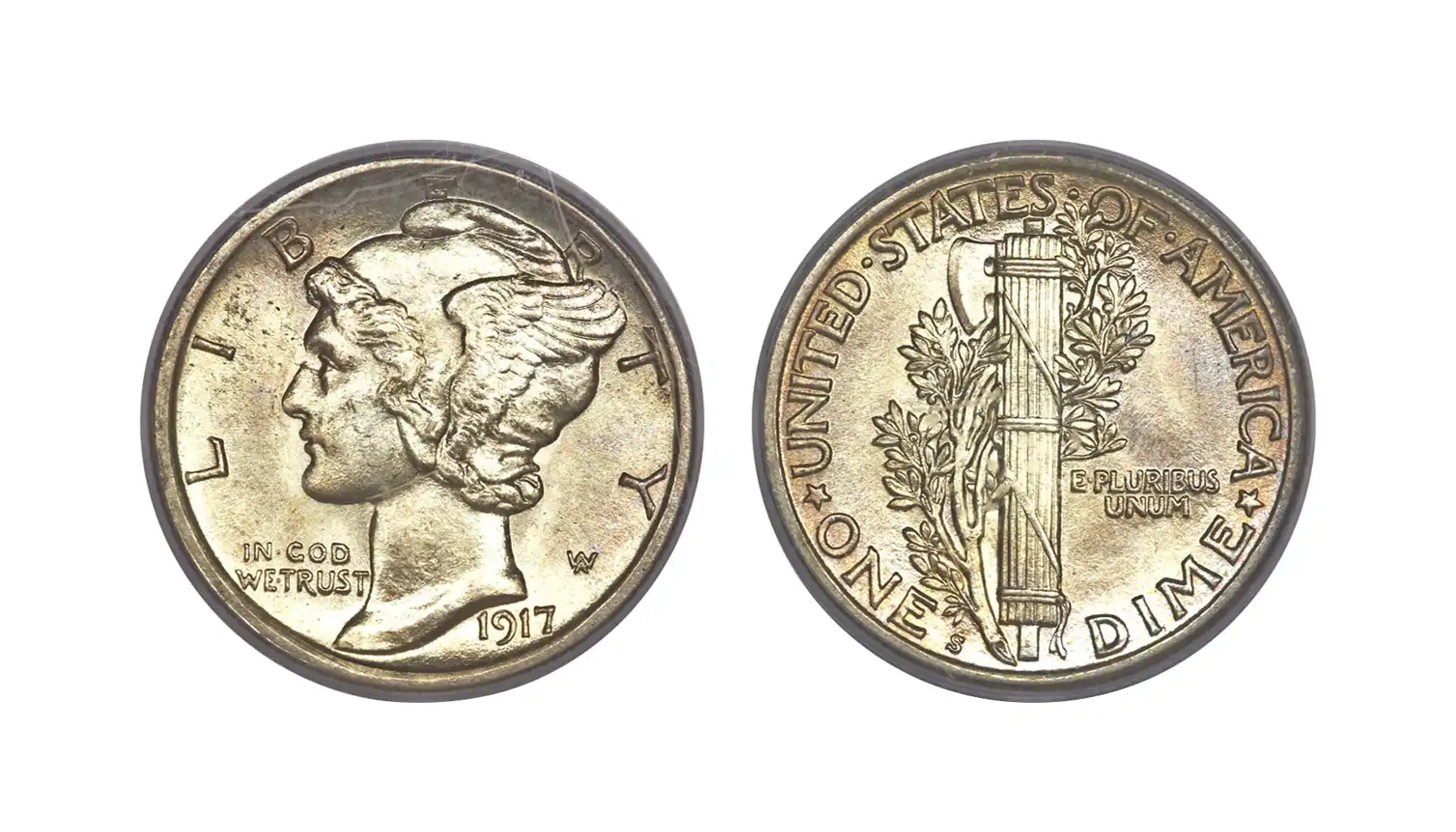
Full Band Dimes: Why They Matter
Collectors value 1917 mercury head dime value more when Full Bands appear. Full Bands indicate that the die struck deeply enough to leave clear lines on the fasces bundle. Coins with Full Bands often trade at higher prices than similar-grade examples without them. That difference makes 1917 mercury head dime worth notably more for collectors seeking top-tier pieces.
The value of 1917 mercury head dime can jump by two to three times when Full Bands are present. Buyers focus on crisp, unbroken lines between each band on the fasces. Dealers often list separate price guides for dimes with and without Full Bands. That notation helps both sellers and buyers understand the premium for superior strike quality.
Grade | Without Full Bands (USD) | With Full Bands (USD) |
MS63 | $50 | $75 |
MS65 | $150 | $300 |
MS67 | $500 | $1,200 |
How to identify Full Bands under magnification
Examine the fasces bundle on the reverse; look for distinct separation between each band
Use a 10x loupe to check that each band shows full relief and no metal flow-over
Ensure each rod in the bundle has a clean, sharp edge with no flattening
Check for consistent depth across all bands; uneven relief often indicates a weaker strike
Compare your ten-cent coin to a reference Full Bands example to spot subtle differences
Errors to Watch For on the 1917 Dime
Die Crack Errors
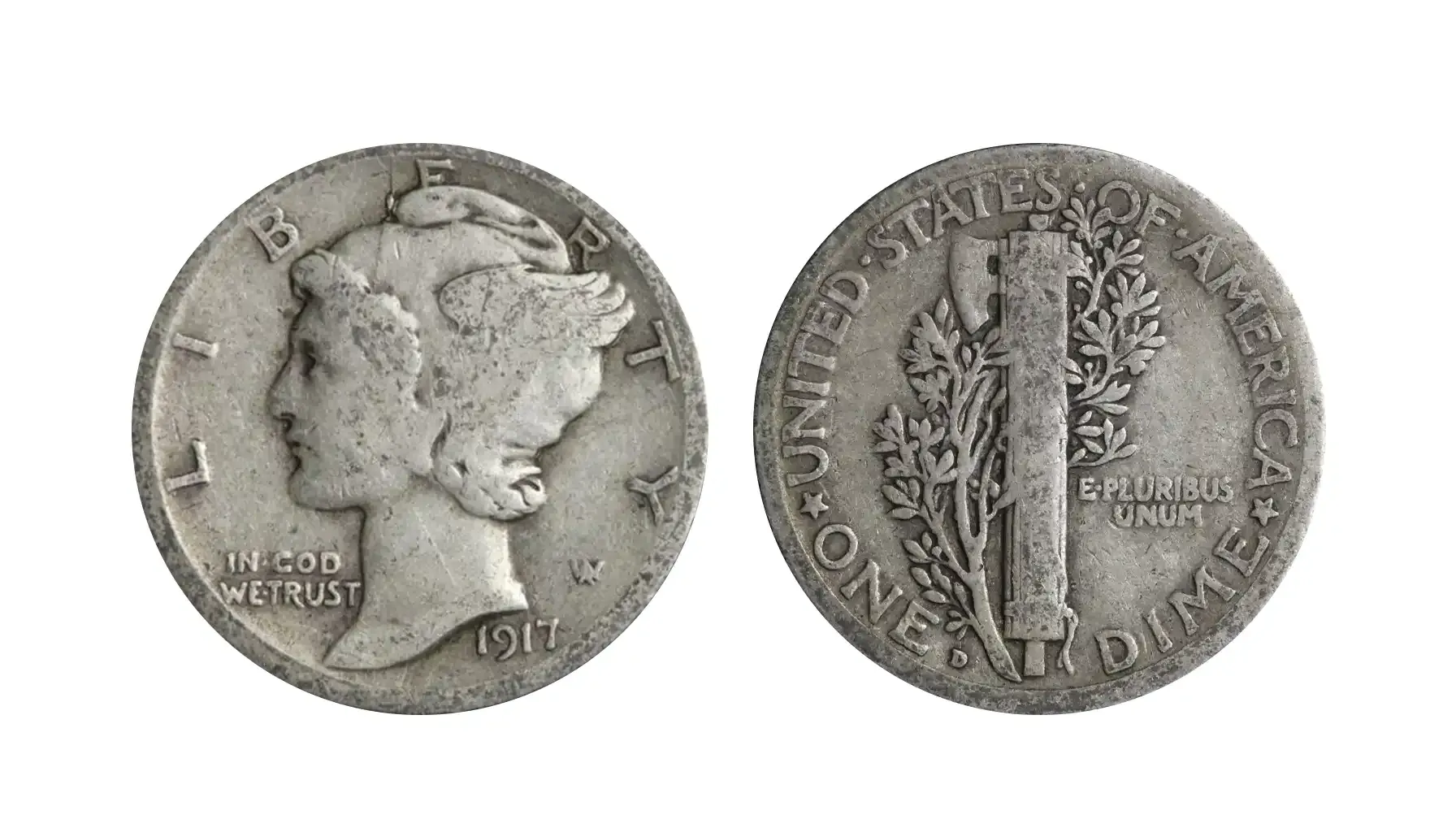
A die crack forms when the metal die develops small fractures. These cracks transfer onto the coin as raised lines. Collectors track 1917 dime error value to assess premiums for these coins. Each die crack follows a unique path, making it a collectible variety.
Look for thin, raised lines branching from the rim into the coin’s field
Inspect both obverse and reverse for cracks crossing design elements
Use a 10x loupe to confirm lines are raised, not recessed scratches
Compare against a known perfect 1917 ten-cent coin to spot any irregular ridges
Note that larger die cracks often begin near high-relief areas, such as Liberty’s cap
Repunched Mint Mark Errors
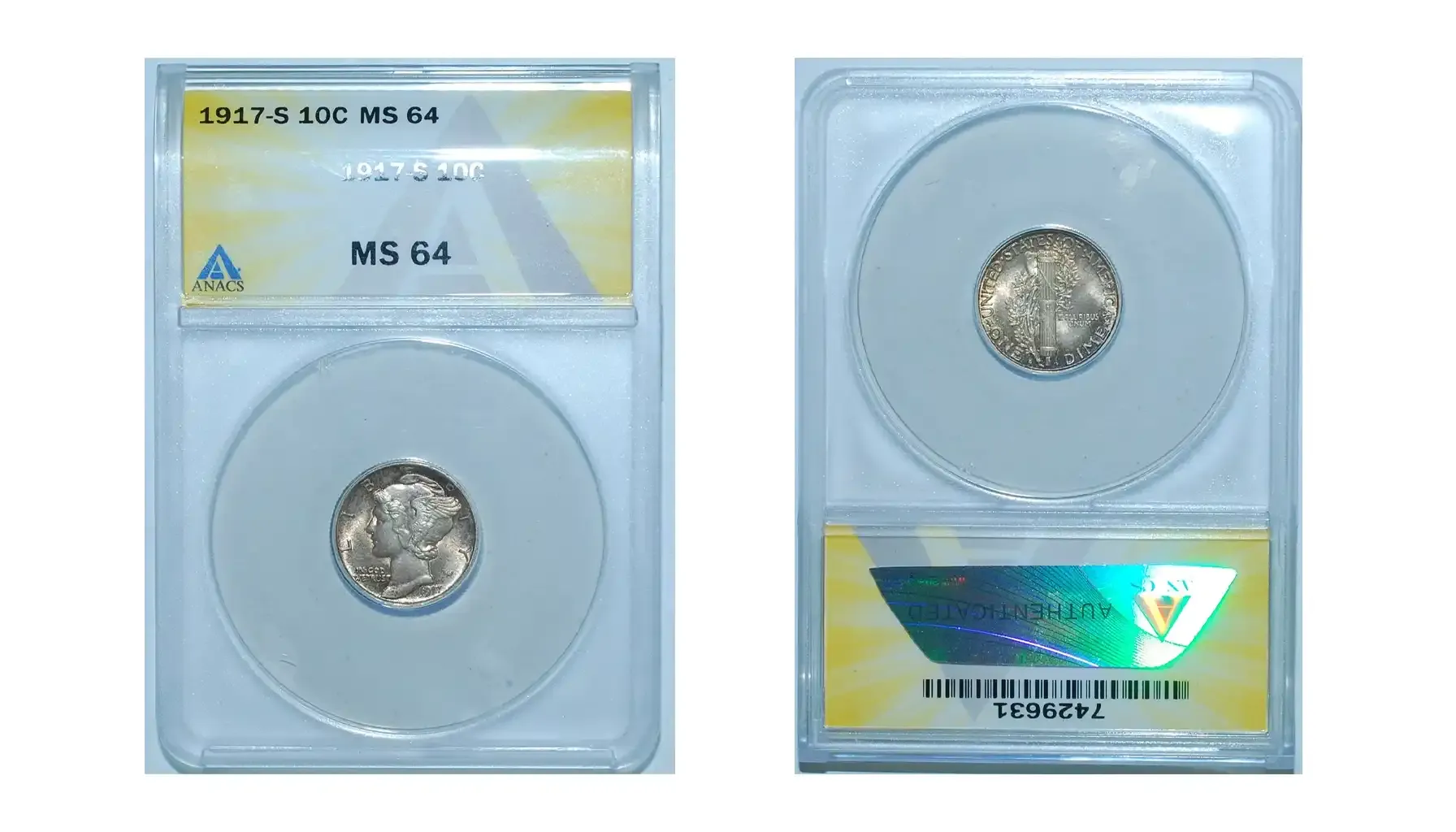
A repunched mint mark happens when the mint mark punches twice in slightly different positions. You can see overlapping impressions above the date. Collectors reference a 1917 dime error list with mint mark location to verify these varieties. Each repunched “D” or “S” creates a mini shadow behind the primary mark.
Examine the area above the date for a faint secondary “D” or “S” outline
Verify that both impressions match in font and size but sit at a slight angle
Check under side lighting to reveal overlapping metal impressions
Compare the mark against a certified example to see offset distances
Look for doubled edges around the letter, indicating a secondary strike
Off-Center Strike Errors
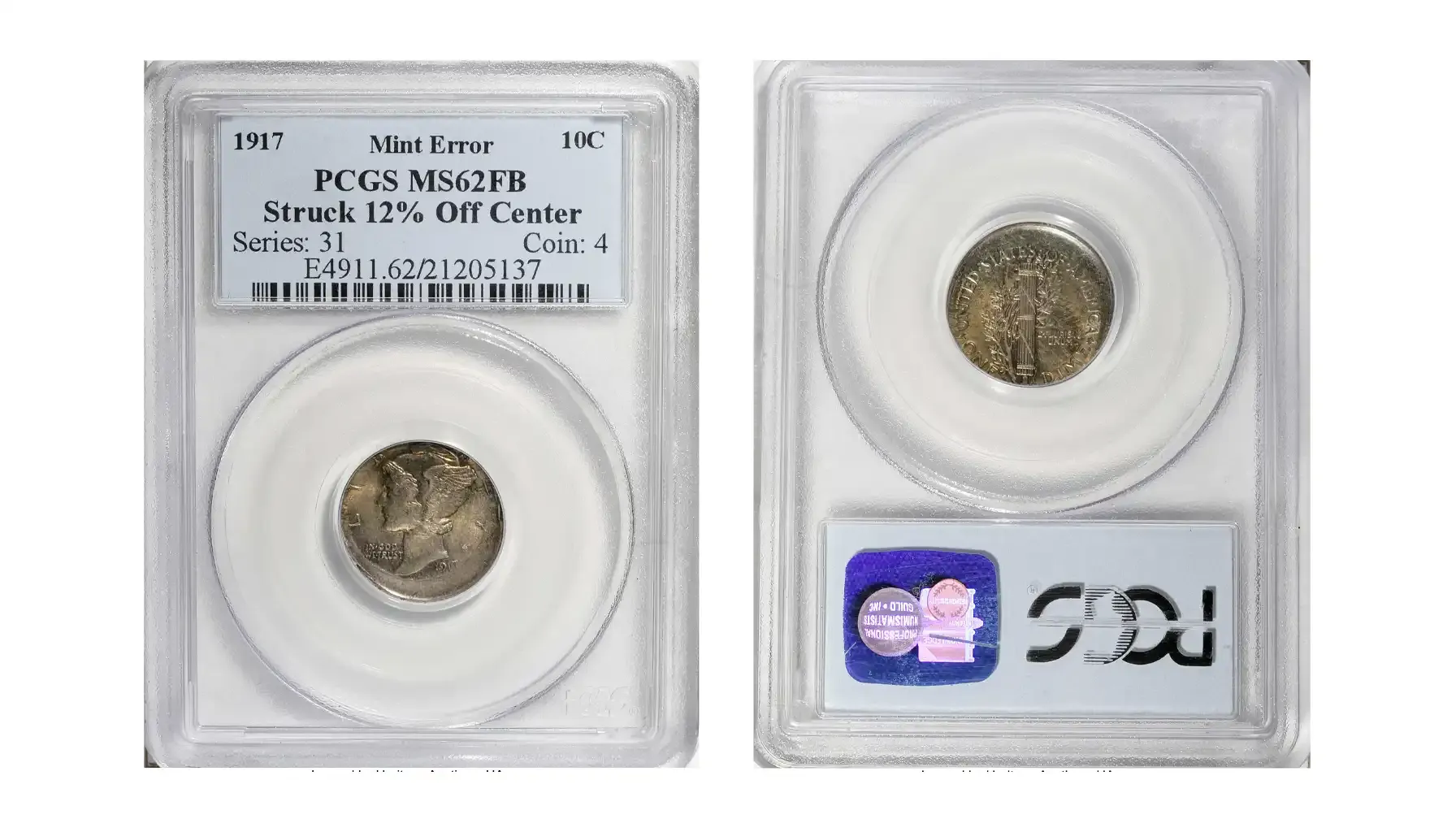
An off-center strike occurs when the planchet feeds improperly and shifts beneath the die. The design appears misaligned, with blank sections of the rim visible. Collectors often wonder is a 1917 dime worth anything with this error. Off-center dimes can carry significant premiums, especially when the shift exceeds 20%.
Measure how many degrees the design is displaced from the coin’s center
Look for a crescent-shaped blank area along the outer rim missing part of the design
Check that the reeded edge appears partially or completely absent on one side
Use a reference centering chart to determine the percentage of misalignment
Compare against a perfectly centered 1917 ten-cent coin to note discrepancy levels
For more error identification resources, see the 1964 dime error list guide.
Is a 1917 Silver Dime Worth Collecting?
Collectors seek the 1917 silver dime value for its solid silver content and historic design. The Mint struck these dimes in large numbers at Philadelphia and Denver. They carry 90% silver, which gives them intrinsic metal worth. Many collectors ask, is a 1917 silver dime worth anything beyond melt value. High-grade and Full Band examples attract premium bids at auctions. These coins also represent the early Mercury design, adding to their appeal.
Long-term interest often hinges on condition and rarity. When you compare silver spot prices to numismatic guides, you gauge the 1917 silver dime coin value more accurately. Uncirculated examples with sharp details bring strong returns. Many investors hold these dimes as tangible silver assets and collectible pieces. Over time, well-preserved coins often outpace basic silver price gains.
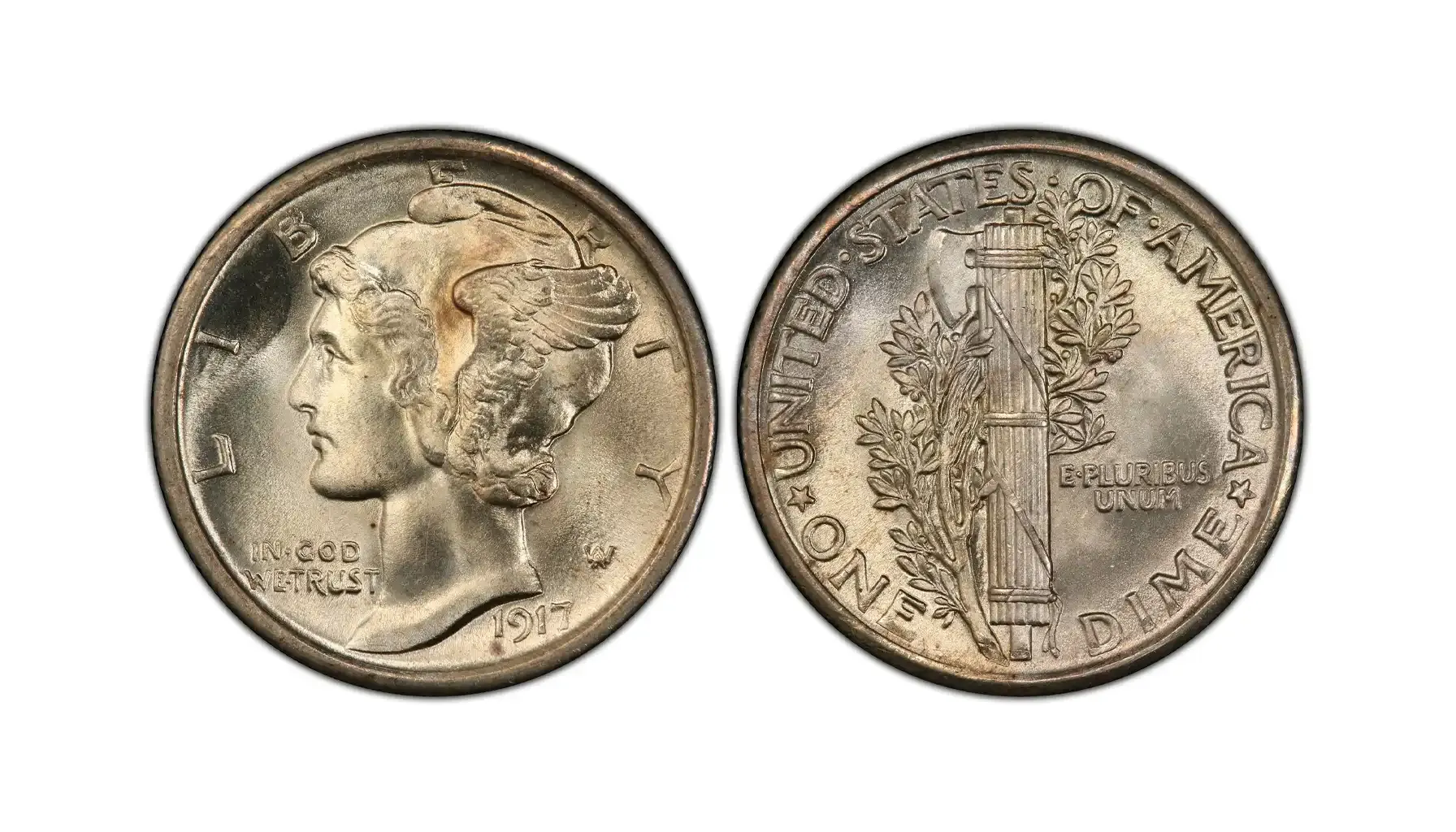
Final Thoughts and Market Tips
Collectors looking at the 1917 US dime value should track silver prices and market trends. Strong demand for high-grade early Mercury keeps prices steady. Always store coins in acid-free holders to prevent toning or damage. That approach preserves both metal content and numismatic value.
Before you sell, ask yourself, is a 1917 mercury dime worth anything in today’s market? Many circulated dimes still trade near silver melt value. Uncirculated examples, especially with full bands, command premiums. Compare recent auction results to find fair sale prices for these coins.
If you own a Denver strike, note the 1917 d dime worth with mint mark often exceeds the Philadelphia issue. Collectors pay extra for well-preserved D mint examples. For detailed grading advice and pricing, see the 1965 Dime Value Guide.


